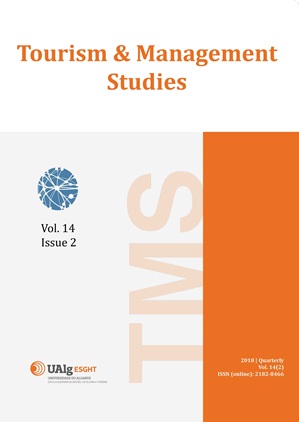Privacy preservation in data intensive environment
Keywords:
Healthcare, Healthcare data frameworks, Privacy saving, Unstructured restoration, Fuzzy systemsAbstract
Abstract: Healthcare data frameworks have enormously expanded accessibility of medicinal reports and profited human services administration and research work. In many cases, there are developing worries about protection in sharing restorative files. Protection procedures for unstructured restorative content spotlight on recognition and expulsion of patient identifiers from the content, which might be lacking for safeguarding privacy and information utility. For medicinal services, maybe related exploration thinks about the therapeutic records of patients ought to be recovered from various destinations with various regulations on the divulgence of healthcare data.
References
Aigner, W.& Miksch, S. (2006). Carevis: integrated visualization of computerized protocols and temporal patient data. Artificial intelligence in medicine, 37(3), 203–218. Adam, N., White, T., Shafiq, B., Vaidya J., & He X., (2007). Privacy preserving integration of health care data. AMIA Annual Symposium proceedings, (pp.1–5), AMIA.
Brickell, J., Porter, D., Shmatikov, V. & Witchel, E. (2007). Privacy-preserving remote diagnostics. In Proc. 14th ACM Conf. Computer andCommunications Security, (pp. 498–507), ACM. Breast cancer (Wisconsin) original dataset: http://archive.ics.uci.edu/ml/datasets/Breast+Cancer+Wisconsin+%28Original%29 ARX tool: http://arx.deidentifier.org/api/. Accessed: 2016-03-20.
Barni, M., Failla, P., Lazzeretti, R., Sadeghi, A. & Schneider, T. (2011). Privacy-preserving ECG classification with branching programs and neural networks. IEEE Trans. Inf. Forensics Security, 6(2), 452–468.
Cao, N., Wang, C., Li, Ren, M.K., &Lou, W. (2011). Privacy-preserving multikeyword ranked search over encrypted cloud data, in: Proceeding of the IEEE INFOCOM (pp. 121-132).
Cormode, G., Procopiuc, M., Shen, E., Srivastava, D. & Yu, T. (2012). Differentially private spatial decompositions. In: Proceedings of the IEEE ICDE, (pp. 154-165), IEEE.
Dwork, C., McSherry, F., Nissim, K. & Smith, A. (2006). Calibrating noise to sensitivity in private data analysis. In: Theory of Cryptography, Springer, 265–284.
Danilatou, V. & Ioannidis, S. (2010). Security and Privacy Architectures for Biomedical Cloud Computing. In 10th Int. Conf. IEEE Information Technology and Applications in Biomedicine (ITAB), (pp.1-4), IEEE.
Dean, B.B., Lam, J., Natoli, J.L., Butler, Q., Aguilar, D., &Nordyke, R.J. (2010). Use of electronic medical records for health outcomes research: a literature review. Medical Care Research Review, 66(6), 11–38.
Horn, W., Popow, C. & Unterasinger, L. (2001). Support for fast comprehension of icu data: Visualization using metaphor graphics. Methods of information in medicine, 40(5), 421–424.
Hunka, T., Dash, S., &Pattnaik, P. K. (2016). Web based Privacy Disclosure Threats and Control Techniques. In Design Solutions for Improving Website Quality and Effectiveness (pp. 334-341). IGI Global. Hasan, H. & Tahir, N.M. (2010). Feature selection of breast cancer based on principal component analysis. In Signal Processing and Its Applications (CSPA), 2010 6th International Colloquium in IEEE, (pp. 1-4), IEEE.
Layouni, M., Verslype, K., Sandikkaya, M., De Decker, B. & Vangheluwe, H. (2009). Privacy-preserving telemonitoring for ehealth. In Dataand Applications Security XXIII, 95–110.
Lau, E.C., Mowat, F.S., Kelsh, M.A., Legg, J.C., Engel-Nitz, N.M., &Watson, H.N. (2011). Use of electronic medical records (EMR) for oncology outcomes research: assessing the comparability of EMR information to patient registry and health claims data. Clin. Epidemiol, 3(1), 259–272.
Liu, J. & Wang, K. (2010). On optimal anonymization for l+-diversity. In: Proceedings of the IEEE ICDE, (pp. 23-32), IEEE.
Mohammed, N., Fung, B., Hung, P. & Lee, C. (2009). Anonymizing healthcare data: A case study on the blood transfusion service. In: Proceedings of the ACM SIGKDD, (pp. 32-41), ACM.
McSherry, F. & Mahajan, R. (2010). Differentially-private network trace analysis. In: Proceedings of the ACM SIGCOMM, (pp.24-31), ACM.
Mohan, P., Marin, D., Sultan, S. & Deen, A. (2008). Medinet: Personalizing the self-care process for patients with diabetes and cardiovascular disease using mobile telephony. In Proc. 30th Ann. Int. Conf. IEEE Engineering in Medicine and Biology Society, 2008 (EMBS 2008), (pp. 755–758), IEEE.
Omnibus, Hipaa rule in the Federal Register, (2013). Retrieved 12 April, 2016 fromhttp://www.gpo.gov/fdsys/pkg/FR-2013-01-25/pdf/2013-01073.pdf.
Plaisant, C., Mushlin, R., Snyder, A., Li, J., Heller, D.& Shneiderman, B. (1998). Lifelines: using visualization to enhance navigation and analysis of patient records. In Proceedings of the AMIA Symposium, American Medical Informatics Association, (pp. 76-85), IEEE.
Perer A. & Sun, J. (2012). Matrixflow: temporal network visual analytics to track symptom evolution during disease progression. In AMIA annual symposium proceedings, American Medical Informatics Association, (pp. 716-725), AMIA.
Wang, W., &Zhang, Q. (2015). Towards long-term privacy preservation: A context aware perspective. IEEE Wireless Communication, 24(2), 142-159.
Wang, C., Ren, K., Yu, S., & Urs, K.M.R. (2012). Achieving usable and privacy-assured similarity search over outsourced cloud data. In: Proceedings of the IEEE INFOCOM (pp. 185-196).
Xiao, X. & Tao, Y. (2006). Personalized privacy preservation. In: Proceedings of the ACM SIGMOD, (pp.45-56), ACM.
Yuan, J. & Yu, S. (2013). Efficient privacy-preserving biometric identification in cloud computing. In: Proceedings of the IEEE INFOCOM, (pp. 178-186), IEEE.
Downloads
Published
Issue
Section
License
Copyright (c) 2018 Tourism & Management Studies

This work is licensed under a Creative Commons Attribution-NoDerivatives 4.0 International License.
The journal retains published articles’ copyrights, but they are simultaneously licensed under the Creative Commons Attribution License (CC BY-NC-ND), which allows individuals’ to share the relevant papers as long as authorship and publication in this journal are duly acknowledged.



